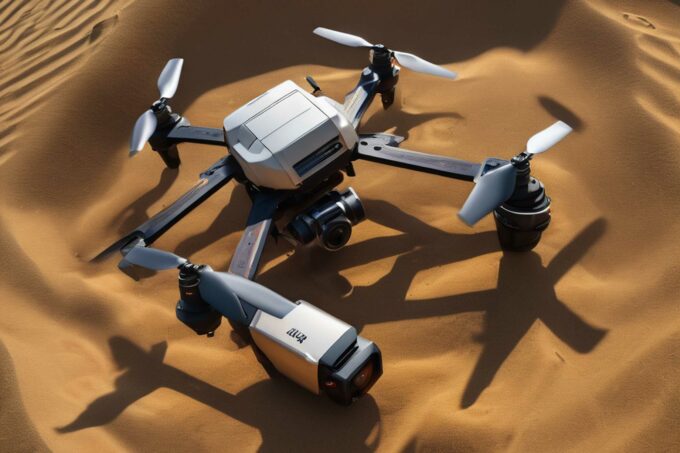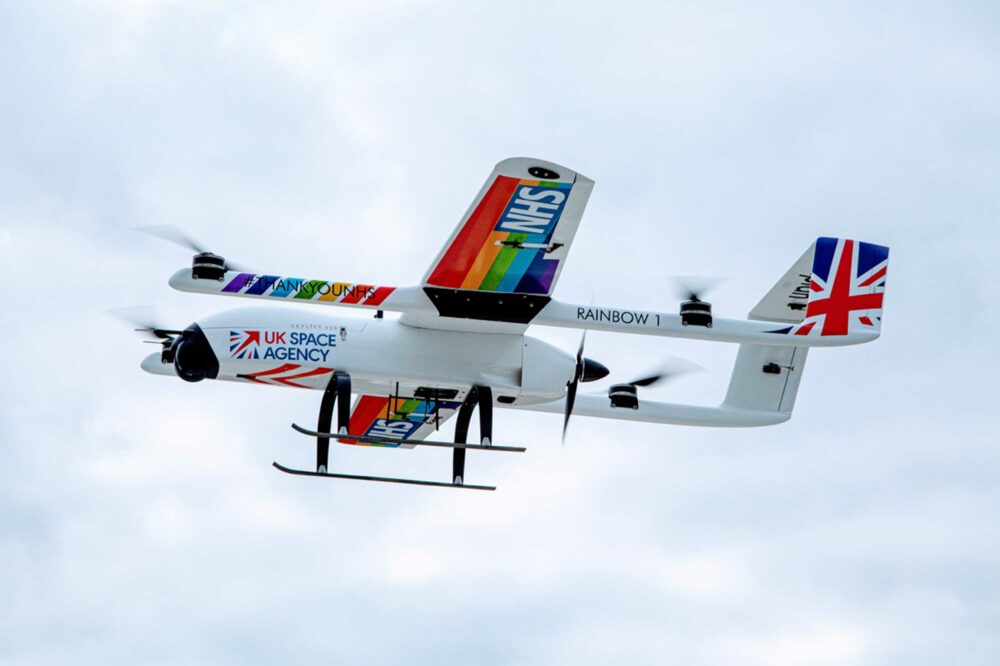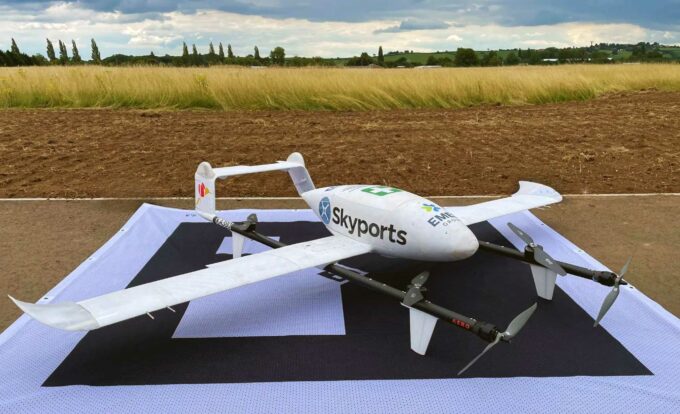Hardly a week goes by without news of yet another application for airspace to conduct some sort of drone trial. Were all applications to be successful, and were they to all be active at the same time, it feels like any cross-country flight would be more a case of threading our way between trials rather than flying efficiently from A to B.
At the moment, most of the trial proposals includes the acronym BVLOS which means Beyond Visual Line of Sight. Currently drone operators must have ‘eyes on’ their machine, as per the CAA regulations in the Drone and Model Aircraft Code CAP 2320
There are also a plethora of CAPs (Civil Aviation Publications) covering rules for different categories of Drone Operations from CAP2003 to 2012. They can be found on the publications page of the regulator’s website.
General Aviation reacts each time a new airspace change proposal pops up as, in general, they appear to be a repeat of an already tested idea. More importantly, these potentially have a negative effect on pilots and aircraft operators based at airstrips and small airfields in Class G airspace.
It seems like the applicants don’t research the route very diligently before starting the process. Anyone can fill in one of these applications to commence an airspace change, and hardly ever is an application turned down!
CAA online trawl…
I spent a few days trawling through the CAA Airspace Change Proposal (ACP) online portal.
A less user-friendly site you’ll struggle to find, with little functionality to understand what’s on the list and a poor search function. Nevertheless, I logged everything ‘drone related’.
I found 84 entries, some going back as far as 2019. Within that list there are ‘In Progress’ (27) ‘Paused’(3) Withdrawn’(29) and ‘Complete’(25).
In reading every one of them, it’s clear that management of the entries is somewhat lacking. A number of the ‘In Progress’ entries are very old with no recent activity so may be paused, cancelled or actually complete.
A number of approved ACPs have conditions attached requiring a post-trial report but, in many cases, this hasn’t been posted to the portal.
What can we learn from all these entries? Firstly, there are some serial culprits. Apian, Flylogix, Skyports and Windracers stand out, along with the cluster under the CAELUS project in Scotland.
Secondly, there are many different types of drones featured. At the top end, the military is looking for airspace for High Altitude Long Endurance operations from Fairford, presumably with some type of General Atomics aircraft like Protector or Sky Guardian.
Mid-range, one finds the ULTRA twin-engine, twin-boom light aircraft from Windracers. In the lightest category, the Swoop Kookaburra from Skyports weighs just 17kg.
One set of initials crops up many times: NHS. It is clear that a large number of these trials around the country proposed by several different sponsors are associated with getting deliveries of medical cargo from or to hospitals or other medical locations.
This begs the question, why are so many trials all attempting to test the same idea? Some appear to have merit such as crossing Morecambe Bay in a few minutes as opposed to a van taking all day around the southern Lake District, or moving samples etc between Guys and St Thomas’ hospitals’ pathology labs in London.

A report from Apian on its trial to move chemotherapy drugs from Portsmouth to Newport, Isle of Wight was an ‘outstanding success’
However, I found in ACP-2021-02 a report from Apian of the results of its trial to move chemotherapy drugs from Portsmouth to Newport, Isle of Wight. From its report the trial was an outstanding success.
Twelve key benefits were accrued for the NHS, including establishing standard operating procedures and conducting BVLOS and VLOS flights safely across the Solent. So a cynic might say ‘Job done, let everyone else know what to do, Florence is your aunty!’ But that’s not happening and Apian is seeking to rerun another trial in Northumbria later this year using ZipLine from the US and Rwanda.
What about the big picture? Why are sponsors seeking more temporary airspace and why is the CAA facilitating such repetitious activity? There are two parts to the answer, and Government funding is one of them.

Aimed at drone operators, the CAA Sandbox Team details how to join its latest programme
The other part is down to the CAA not making progress on finding a way to allow integrated operations, which means drone operators have to apply for airspace to be segregated from all other types of aviation.
In a recent webinar aimed at drone operators the CAA Sandbox Team set out how to join its latest programme.
[embedyt] https://www.youtube.com/watch?v=vkAIS-Incjg[/embedyt]
As part of that broadcast there was a glimmer of hope on the horizon in the shape of the Airspace Modernisation Strategy. Part of that work seeks an incremental transition from segregation to integration of BVLOS ops.
This has already started with Temporary Danger Areas being replaced by Temporary Reserved Areas, which in turn will become Transponder Mandatory Zones. I think though by the time we get to this volume of airspace with ADS-B, it will be called something else.
Interestingly, Europe appears to be dealing with the problem differently. The CAA presented a slide explaining the way the AMS will seek to develop BVLOS airspace vs EASA’s thinking as shown below:
AMS A defined volume of airspace supporting BVLOS ops (TMZ?)
EASA A defined volume of airspace supporting BVLOS ops (U-space)
AMS Enhanced ICAO FIS provision incorporating surveillance (ADS-B 1090/978)
EASA Enhanced ICAO FIS provision incorporating surveillance (SRD 860/5G/ADS-B 1090)
AMS Enhanced ICAO FIS provision incorporating ‘air picture’ rebroadcast via TIS-B
EASA Enhanced ICAO FIS provision incorporating ‘air picture’ rebroadcast via protocol yet to be determined
AMS Fractionalised service provision via an ANSP
EASA Fractionalised service provision via a USSP
All very well, but a bit of ‘devil-in-the-detail’ shows the difference in allowable equipment. Our transponders work on 1090mHZ and 978mHZ is the secondary approved band where you’ll find Sky Echo.
So, the UK does not envisage equipment on the Short Range Device band of 860mHZ where you’ll find PilotAware and Flarm. Europe, on the other hand, will accommodate SRD, meaning a UK manufacturer could find a market in Europe but possibly not the UK, once integrated airspace is in place.
The other driver is funding from the Government. There isn’t enough space to detail all the channels through which the money is flowing, but the Department for Science, Innovation and Technology (DSIT) through its UK Innovation Strategy has paid out millions. Even industry sources recognise some money has gone to commercial enterprises whose sole purpose is to bid for and spend Government money.
It’s created, in the opinion of Robert Garbett “… a self-perpetuating industry focused almost entirely on handing out taxpayers’ money, without a proper strategy for how to bring important emerging technology to market.” Mr Garbett founded Drone Major, a leading consultancy on drone ooperations, and is also Chair of the British Standards Institute committee on Drone and Counter Drone Standards so he should know.
It looks likely that GA will be faced with a continuing cycle of drone trials and TDAs until progress with the AMS delivers a safe method of integration through ADS-B.
We’ll be doing our best to keep you updated on future trials, on how you can respond to consultations and on progress towards the goal of integrating these systems with other traffic in Class G airspace.









